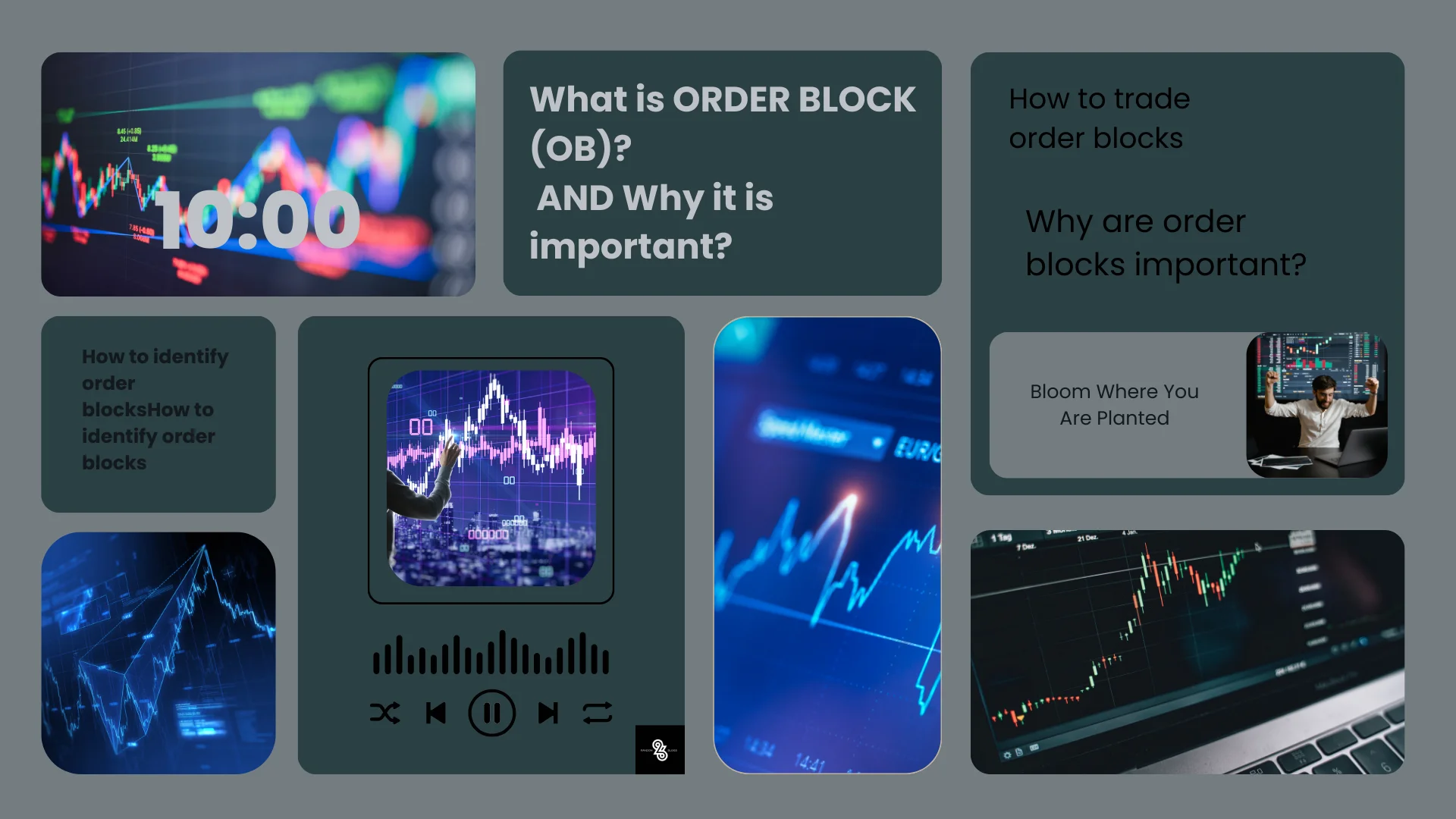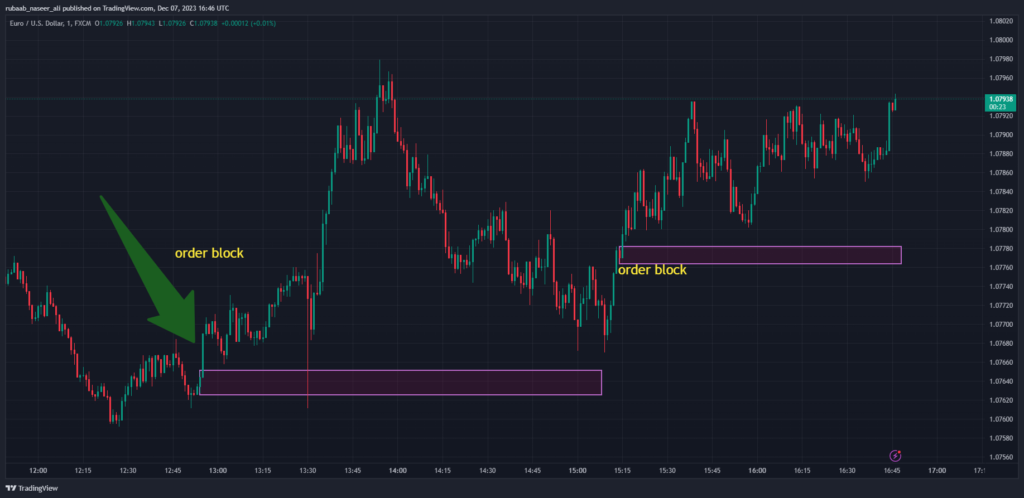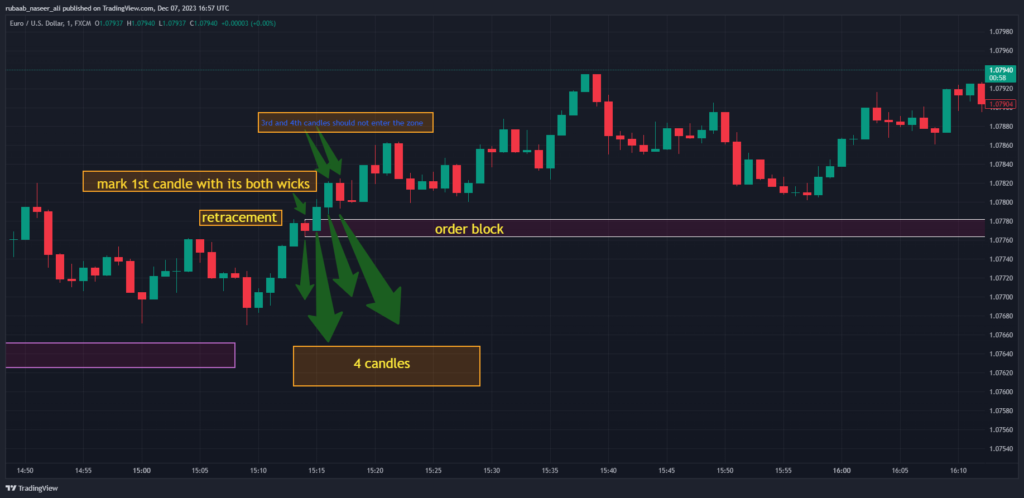
Order blocks are designated price zones where major market participants, such as institutional traders, have previously executed substantial buy or sell orders
These areas contain concentrations of orders that can influence price dynamics, liquidity, and overall market sentiment.
Table of Contents
The notion of order blocks represents a specific strategy for pinpointing crucial support and resistance levels by analyzing the actions of institutional traders. These identified levels serve as strategic entry or exit points for trading positions.
What is AN ORDER BLOCK (OB)?
An order block refers to a region with a significant accumulation of limit orders awaiting execution.
On a chart, order blocks are recognized by examining past price action and identifying regions where the price underwent substantial movement or sudden shifts in direction.

In price action trading, it is crucial to monitor these zones as they can serve as pivotal points, exerting influence on the subsequent direction of the market.
When a substantial volume of buy or sell orders congregates at a specific price level (or within a zone), it has the potential to establish a robust level of support or resistance. As the price nears these levels, the presence of these significant orders can absorb buying or selling pressure, leading to a potential reversal or consolidation in the price movement.
Traders frequently seek indications to determine whether a particular level will withstand or break.
Engaging in trading order blocks requires recognizing zones of notable buying or selling activity, and leveraging this information to make informed decisions regarding potential trade entries, exits, and risk management.
Why are order blocks important?
Order blocks wield influence on the market in various ways:
Price Movement: The substantial size of these orders can sway market prices. Execution of a large block of buy orders tends to push prices upward, whereas a significant block of sell orders can drive prices downward.
Liquidity: Order blocks have the potential to alter market liquidity as they are often sizable enough to absorb available liquidity. This can lead to temporary imbalances between supply and demand, resulting in price volatility.
Market Sentiment: Order blocks may serve as indicators of the sentiment among large market players who possess superior information and are well-informed. Consequently, other traders may follow suit, contributing to upward price movements.
In summary, order blocks play a crucial role in price action trading, offering insights into the behavior of institutional traders and identifying key levels likely to impact the future price of an asset.
How to identify order blocks
Price action traders commonly analyze historical price movements on the chart to identify areas where the market has exhibited significant reactions, such as reversals, consolidations, or breakouts.
Potential order blocks are designated at the price levels corresponding to these notable reactions.
Order blocks often function as key support and resistance levels. A price rebounding from an order block on multiple occasions is perceived as a robust level of support or resistance, depending on whether the price originated from above or below.
The frequency of price revisiting the order block influences its strength as a support or resistance level. As the price repeatedly returns to the order block, its efficacy weakens.

When the price breaches an order block level, the role of support or resistance undergoes a reversal. For instance, a breached resistance level can transform into a support level, and vice versa. In such cases, traders might anticipate a retest of the broken level before considering a trade aligned with the breakout direction.
How to trade order blocks
Below is a systematic guide for trading order blocks:
1. Identify order blocks
Examine historical price movements on the chart to identify regions where the market has exhibited notable reactions, such as price reversals, consolidations, or breakouts. Designate these price levels as potential order blocks, which could function as either support or resistance.
2. Observe price behavior
Observe the price behavior as it approaches an order block. If the price consistently rebounds from the level, it indicates a robust area of support or resistance. Remember that the price might fluctuate slightly above or below the exact level, so consider the order block as a zone rather than a precise level.
3. Trade entries
Explore two potential types of trade entries:
- Reversal Trades: If the price nears an order block and exhibits indications of a reversal, such as the emergence of reversal candlestick patterns like shooting stars, hammers, or engulfing patterns, you may contemplate entering a trade against the prevailing trend. This involves anticipating the price to rebound off the order block.
- Breakout and Retest Trades: Should the price surpass or fall below an order block, wait for a retest of the level, now potentially serving as support or resistance based on the breakout direction. Seek confirmation through candlestick patterns, price action, or other technical indicators before initiating a trade aligned with the breakout direction.
4. Look for confluence
To enhance the likelihood of a successful trade, consider integrating order blocks with additional technical analysis tools like trendlines, moving averages, Fibonacci levels, or chart patterns.
5. Set stop loss and profit targets
Position a stop-loss order just beyond the order block to mitigate the risk of potential losses arising from unforeseen price fluctuations.
Establish profit targets by referencing nearby support and resistance levels or by employing a risk-reward ratio that aligns with your risk tolerance and individual trading strategy.
6. Manage risk
Order block levels may not be universally honored by the market.
Employ prudent position sizing and effective risk management strategies to regulate your exposure. Maintain a consistent level of risk per trade and exercise caution against excessive leverage usage.
7. Monitor and adjust
Monitor your trades closely and be ready to adjust your stop-loss, trail it, or modify profit targets if market conditions shift. Maintain discipline and adhere to your established trading plan..
Similar to any trading strategy, trading order blocks is NOT a foolproof method. Before implementing this approach in a live trading setting, it is crucial to practice and conduct backtesting on your own!





In a crowded digital space, this article stands out for its well-articulated ideas, delivering a satisfying blend of information and engagement. ❤️